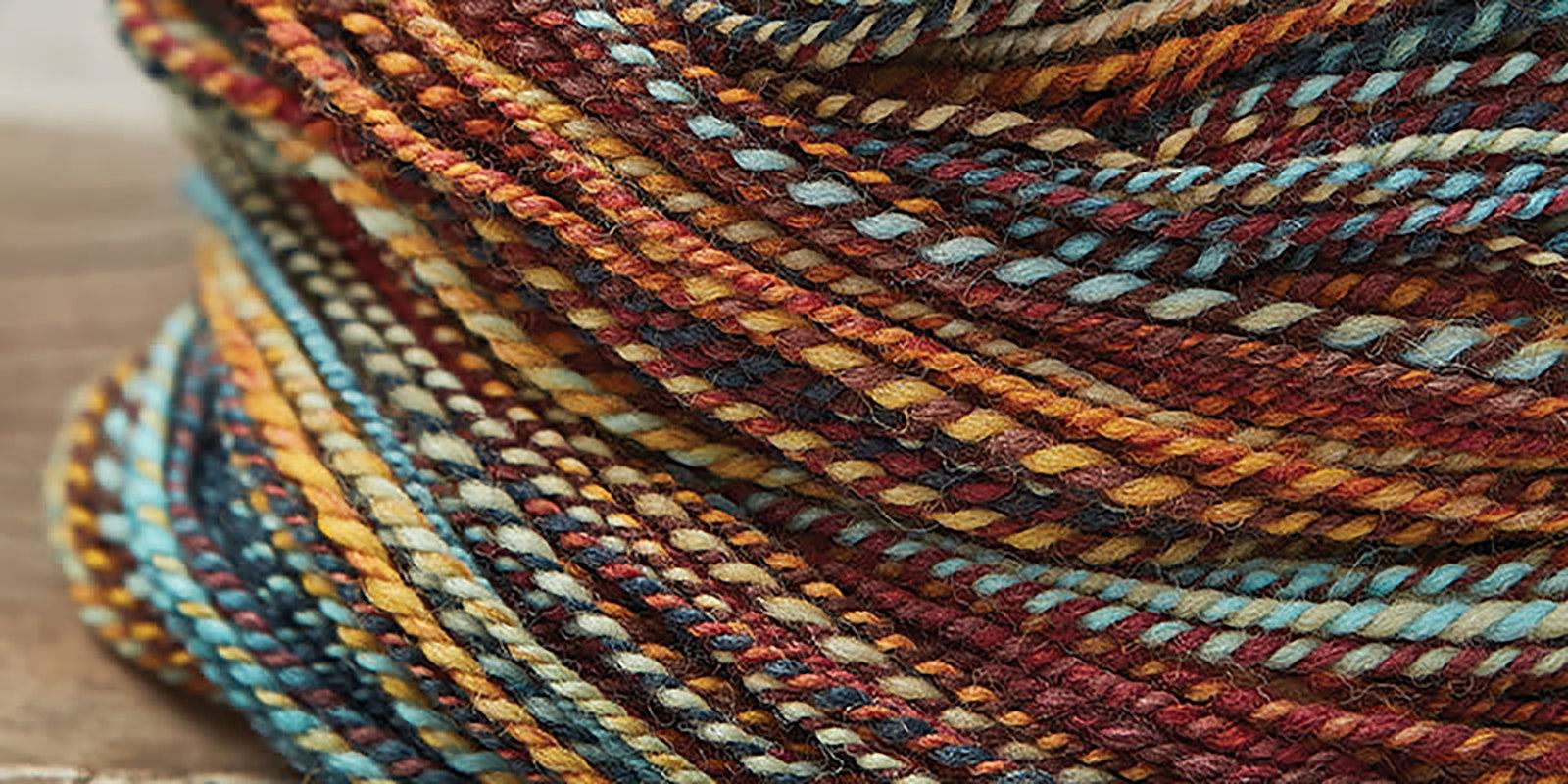Regardless of how you spin or what equipment you use, wraps per inch (wpi) can be measured for most yarns. Wpi is meant to give a rough idea of yarn weight—not its physical weight but its category such as lace, fingering, bulky, and so on (download the Craft Yarn Council’s Yarn Standards Table). This number, together with other details about your yarn, can help create a complete picture when describing a yarn to others or for your own future reference, but it is just one piece of the puzzle.
Tools
The first step in using wpi is measuring it. There are several models of wpi gauges (often called inch gauges) that can help; they range in price from $2 to $20 depending on the wood used and how ornate they are. A ruler can be used, although be wary because a ruler does not typically have a groove into which you can pack the yarn to refusal.
 Nancy’s Knit Knack’s tool. Photo by Nancy’s Knit Knack LLC
Nancy’s Knit Knack’s tool. Photo by Nancy’s Knit Knack LLC
Measuring WPI
Wrap a length of yarn around your gauge, packing to refusal, to determine the wraps per inch (wpi) of the yarn. Packing to refusal means that you push the strands together to fill the 1-inch groove, being sure not to stretch or smoosh the yarn as you wrap it, as this will distort your result. Strands should not overlap or gap.Then simply count the number of strands in the 1-inch groove to obtain wpi.
- Nancy’s Knit Knack’s WPI Tool Kit includes a 5" long wpi tool that is laser etched with a 3" length of markings so that you can calculate bulky or less consistent yarns by taking an average count per inch.
- VIP Fibers Spinner’s Control Card can be used as a quick check without having to wrap your yarn.
- Wooden inch gauges made by Rod Stevens are elegant in their simplicity and easy to hang from your wheel.
- Schacht Spindle Company’s Dizzy Yarn Gauge has a 1" groove as well as a 1⁄2" groove to measure wpi and may also be used as a sett gauge for weaving. Be sure to multiply your result by two if using the 1⁄2" groove. The tool also sports two differently sized holes to use as a diz in creating sliver.
 Clockwise from top: VIP Fibers Spinner’s Control Card, Dizzy Yarn Gauge by Schacht Spindle Company, and wooden gauge by Ron Stevens
Clockwise from top: VIP Fibers Spinner’s Control Card, Dizzy Yarn Gauge by Schacht Spindle Company, and wooden gauge by Ron Stevens
Helpful Hints
It is useful to be familiar with yarn approximations for the number of yards per pound for a given wpi and the typical knitting gauge or weaving sett and needle size to use. If you become familiar with these related measurements, then wpi will give you a good starting point to begin your swatching for a project. It also can help if you wish to replicate a commercial yarn.
Just as many other measurements or observations of your yarn may change after finishing, such as the overall weight or twists per inch (tpi), so, too, can your wpi. Given accurate equipment, tpi or yards per pound (ypp) can be measured consistently. However, not every spinner will measure the same wpi for a given yarn. Your version of packing to refusal may or may not exactly match the next spinner’s version. Because of this variance, wpi should only be used as a general guideline and must be considered together with other descriptors to give a better picture of the overall yarn. Also, the commonly accepted approximations apply only to plain yarns—not to novelty yarns such as bouclé or spirals. Wpi alone doesn’t paint a complete picture of a yarn because it does not account for fiber type, loft, elasticity, and so many other factors.
An Example
While measuring wpi can be useful in finding a replacement yarn, it is not the only factor to be considered. These two samples show just how different two yarns of the same wpi can be. Both are spun worsted from the same preparation type and fiber. Notice that, although both yarns are swatched on U.S. size 3 needles using 20 sts and 8 rows, the results are very different.
 Top: Merino, singles, 17 wpi, 1,400 ypp. Bottom: Merino, 3-ply, 17 wpi, 750 ypp
Top: Merino, singles, 17 wpi, 1,400 ypp. Bottom: Merino, 3-ply, 17 wpi, 750 ypp
The 3-ply yarn isn’t as lofty as the singles, so the stitches won’t bloom in the same manner. However, the softer singles yarn will be less hardwearing and more prone to pilling. If selecting one of these two yarns for a project, keep in mind the amount of fiber needed with such differing yards per pound. A sweater made in this 3-ply would be very heavy.
This article was published in the Spring 2008 issue of Spin Off.
Also, remember that if you are an active subscriber to Spin Off magazine, you have unlimited access to previous issues, including Spring 2008. See our help center for the step-by-step process on how to access them.
Amanda Berka is a former assistant editor for Spin Off magazine.
Originally published November 11, 2015; updated May 20, 2022.

